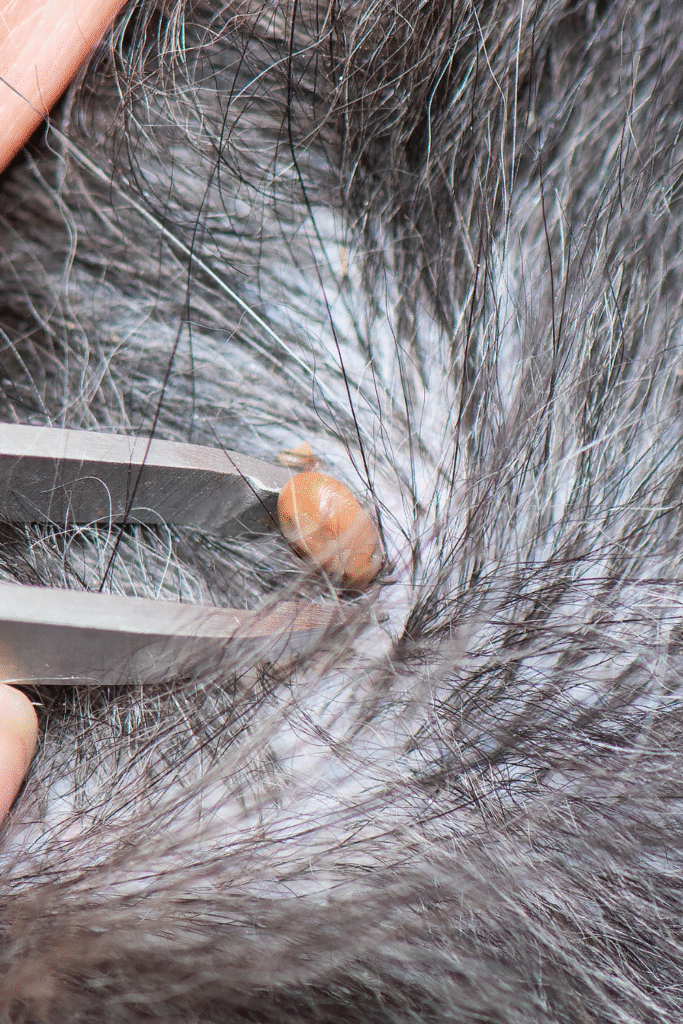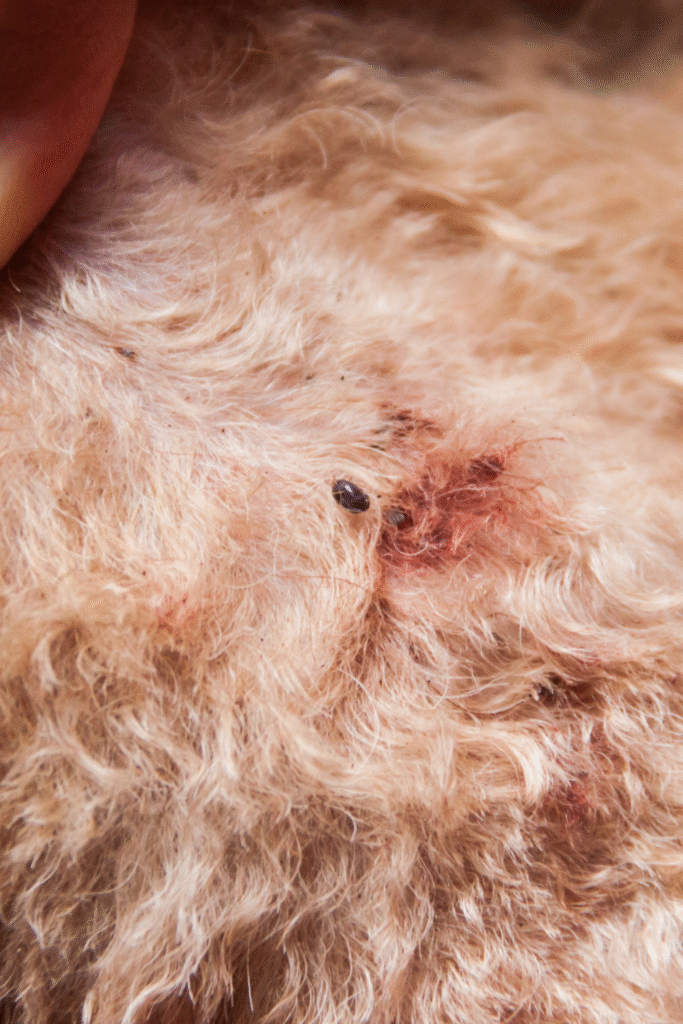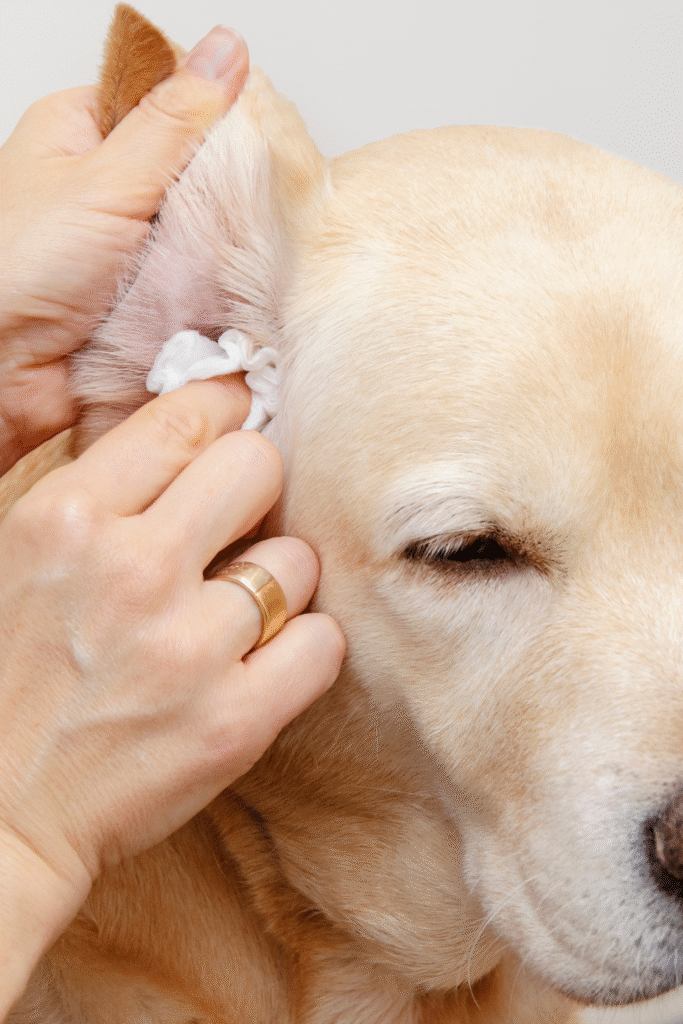Keeping your dog happy and healthy is every pet owner’s priority. One hidden threat that can disrupt your pup’s well-being? Parasites. Dog parasites are more than just pesky invaders; they can cause significant health risks for both your furry friend and, in some cases, even for you. This comprehensive guide will walk you through the most common parasites, how to spot them, ways to eliminate them, and crucially, how to keep them at bay.
Table of Contents
-
- Fleas
- Ticks
- Mites
-
- Roundworms
- Tapeworms
- Whipworms
- How to Identify and Diagnose Parasites in Dogs
- Effective Methods to Treat Dog Parasites
- Preventing Dog Parasites
- Risks of Dog Parasites for Humans
- Comparison Table of Parasite Treatments
- FAQs About Dog Parasites

What Are Dog Parasites?
Parasites are organisms that live on or inside a host, feeding on its resources to survive. When it comes to dogs, these tiny invaders can cause both discomfort and illness.
From external parasites, like fleas and ticks, to internal ones, like worms, these pests wreak havoc on your dog’s health if left untreated.
Parasites differ in how they infect dogs and the symptoms they cause. External parasites are generally visible to the naked eye, while internal ones often require diagnostic tests to confirm.
Although some parasites are species-specific, others can also inflict harm to humans, making quick identification and treatment critical.
Symptoms of a parasitic infection can vary widely, depending on the type of parasite. Common signs include itching, skin irritation, diarrhea, vomiting, weight loss, and lethargy.
While parasites may seem inevitable, understanding the different types and how to protect your dog can keep these issues under control.
Ahead, we’ll break down the most prevalent external and internal dog parasites, along with practical advice on treatment and prevention.

Common External Dog Parasites
External parasites target your dog’s coat and skin, feeding on blood or other bodily resources.
Below are the most common culprits and how to manage them.
1. Fleas
Fleas are tiny, wingless insects that latch onto your dog’s skin and feed on its blood.
They cause intense itching and can transmit harmful diseases such as flea allergy dermatitis (FAD).
If left untreated, flea infestations can grow rapidly.
Prevent fleas by using flea-specific shampoos, sprays, or monthly topical treatments.
Regular grooming and vacuuming also help in keeping fleas at bay.
2. Ticks
Ticks are another blood-sucking parasite that attaches to your dog’s skin.
They can transmit severe illnesses, like Lyme disease and ehrlichiosis.
You’ll often find ticks around the head, ears, or belly of your dog.
Promptly remove ticks with a tick remover tool and apply tick repellents regularly.
Year-round prevention is crucial, as ticks are active throughout multiple seasons.
3. Mites
Mites are microscopic pests that burrow into your dog’s skin, leading to mange—a condition marked by hair loss, scaly patches, and intense itching.
Types of mange include sarcoptic mange (scabies) and demodectic mange.
Treatment involves medicated shampoos, oral medications, or topical ointments.
Since mites are highly contagious, isolating infected dogs decreases spread to other pets.

Common Internal Dog Parasites
Internal parasites reside in a dog’s internal organs, such as the intestines, heart, or lungs, wreaking havoc quietly until symptoms become apparent.
1. Roundworms
Roundworms are among the most common internal parasites in dogs.
They live in the intestines and steal nutrients, causing digestive disturbances like diarrhea and vomiting. Puppies often acquire them through nursing or in utero.
Treatment typically involves deworming medications that are safe and effective. Regular fecal tests can catch infestations early.
2. Tapeworms
Tapeworms are flat, segmented worms that attach themselves to the intestinal walls.
These parasites are usually contracted through flea ingestion.
Symptoms include weight loss and the presence of rice-like worm segments in your dog’s stool.
To treat tapeworms, your vet may prescribe oral or injectable anti-parasitic medications. It’s also essential to prevent flea infestations.
3. Whipworms
Whipworms attack the large intestine, where they cause diarrhea mixed with blood or mucus.
They’re transmitted via ingestion of contaminated soil or feces.
Eliminating whipworms often requires several rounds of deworming treatment.
Maintaining proper hygiene and limiting exposure to unclean environments is key to prevention.

How to Identify and Diagnose Parasites in Dogs
The first step toward treatment is recognizing the signs of an infestation. Here are some tips for identifying common symptoms, along with effective diagnostic tools.
- Skin Scratching and Itching
Dogs infested with fleas, mites, or ticks scratch themselves relentlessly. Look for red, irritated patches or hair loss around the ears, belly, and back.
- Digestive Issues
Vomiting, diarrhea, or changes in stool consistency often point to internal parasites like roundworms or hookworms.
- Weight Loss
A sudden drop in weight despite regular eating may indicate a parasite robbing your dog of nutrients.
- Lethargy
If your pup appears unusually tired or inactive, it’s worth investigating for parasites.
Diagnostic Methods:
- Fecal Examination: Detects internal parasites by analyzing stool.
- Skin Scrapings: Used for identifying mites and mange.
- Blood Tests: Useful for diagnosing heartworm disease.

Effective Methods to Treat Dog Parasites
Treatment methods vary depending on the type of parasite. Below are some popular options your veterinarian may recommend.
| Type of Parasite | Symptoms | Treatment Options | Preventive Measures |
|---|---|---|---|
| Internal (e.g., worms) | Weight loss, vomiting, diarrhea, bloated abdomen | Deworming medications, prescribed by a veterinarian | Regular fecal checks, monthly preventatives |
| External (e.g., fleas) | Itching, hair loss, red or irritated skin | Topical treatments, oral medications, flea collars | Keep living spaces clean, flea prevention products |
| Heartworms | Coughing, lethargy, difficulty breathing, weight loss | Injectable medications, strict exercise restriction | Monthly heartworm preventatives, regular blood tests |
| Mites (e.g., mange) | Hair thinning, irritated patches, excessive scratching | Prescribed shampoos, topical or oral medications | Routine grooming, keep away from infected animals |
This table provides an overview of common parasites, their symptoms, treatment methods, and ways to prevent infestations, ensuring your pup stays healthy and happy. Always consult a veterinarian for accurate diagnosis and treatment tailored to your dog’s needs.
Always consult your vet for tailored advice and avoid self-medicating, as improper usage may harm your dog.

Preventing Dog Parasites
Prevention is better than cure. Here’s how to keep parasites from making your dog their next target.
- Monthly Preventatives
Use monthly flea, tick, or heartworm treatments to deter infestations.
- Hygienic Living Spaces
Clean your dog’s bedding, toys, and living area regularly.
- Close Supervision
Avoid allowing dogs to eat random scraps or sniff feces while outdoors.
- Scheduled Vet Visits
Routine vet checkups, including fecal exams, can detect issues before they escalate.
By proactively guarding your pup against parasites, you can save yourself from costly treatments later.

Risks of Dog Parasites for Humans
Some parasites are zoonotic, meaning they can spread to humans.
For instance, roundworms and hookworms can migrate under human skin when people touch infected soil or dog feces.
This can lead to conditions like cutaneous larva migrans, a skin infection caused by hookworm larvae.
Additionally, contact with contaminated soil or feces can sometimes result in more severe health problems, particularly in young children, the elderly, or individuals with weakened immune systems.
Therefore, maintaining strict hygiene practices, like washing hands thoroughly after handling your dog or cleaning up after them, is crucial.
Regularly deworming your pet and properly disposing of dog waste are simple yet effective measures to reduce the risks of transmission and ensure the safety of both your family and your furry companion.
Such conditions pose severe risks, particularly to children or immunocompromised individuals.
Always maintain excellent hygiene, like washing hands after petting your dog or cleaning up after them.

Comparison Table of Parasite Treatments
| Parasite Type | Treatment Options | Frequency | Notes |
|---|---|---|---|
| Fleas | Topical treatments, oral medications, flea collars | Monthly (or as directed) | Ensure all pets in the household are treated to prevent re-infestation. |
| Ticks | Topical treatments, oral medications, tick collars | Monthly (or as directed) | Regularly check your dog for ticks, especially after outdoor activities. |
| Intestinal Worms | Deworming tablets, powders, or pastes | Every 3–6 months (or as advised by the vet) | Puppies may need more frequent deworming in their early months. |
| Heartworms | Oral or topical preventatives | Monthly or annual, depending on medication | Heartworm tests are recommended before starting a prevention protocol. |
| Mites | Prescription sprays or oral medications | Case-specific (as advised by the vet) | May require ongoing treatment for infestations like mange. |
FAQs About Dog Parasites
- Can dog parasites be prevented entirely?
A combination of hygiene, preventatives, and regular vet checkups significantly lowers the risk.
- How are parasites transmitted?
Parasites spread through contaminated soil, food, water, or contact with infected animals.
- Are natural remedies effective for parasite control?
While some natural remedies can lower risks, prescription options are proven more effective.
- When should I start parasite prevention for puppies?
Start as early as 2-3 weeks old under a vet’s supervision.
- Do indoor dogs need parasite preventatives?
Yes, because external parasites like fleas and ticks can still find their way indoors.
6. What is the most common dog parasite?
The most common dog parasite is the flea, known for causing itching and transmitting diseases.
7. What kills parasites on dogs?
Parasites on dogs can be killed using veterinary-approved treatments such as oral medications, topical treatments, and medicated shampoos specifically designed to eliminate fleas, ticks, and other parasites.
8. Do I need to treat my house if my dog has worms?
Yes, it is recommended to clean and disinfect your home thoroughly, as some worm eggs or larvae can survive in the environment and potentially reinfect your dog or spread to other pets and family members.
9. Can I touch my puppy if he has worms?
Yes, you can touch your puppy, but it is important to practice good hygiene such as washing your hands thoroughly afterward to avoid any potential transmission of parasites.
By understanding the threats posed by dog parasites and implementing proper care routines, you can ensure your furry friend remains happy, healthy, and free of unwelcome guests. Prioritize prevention, stay vigilant, and consult your vet regularly for the best outcomes.
